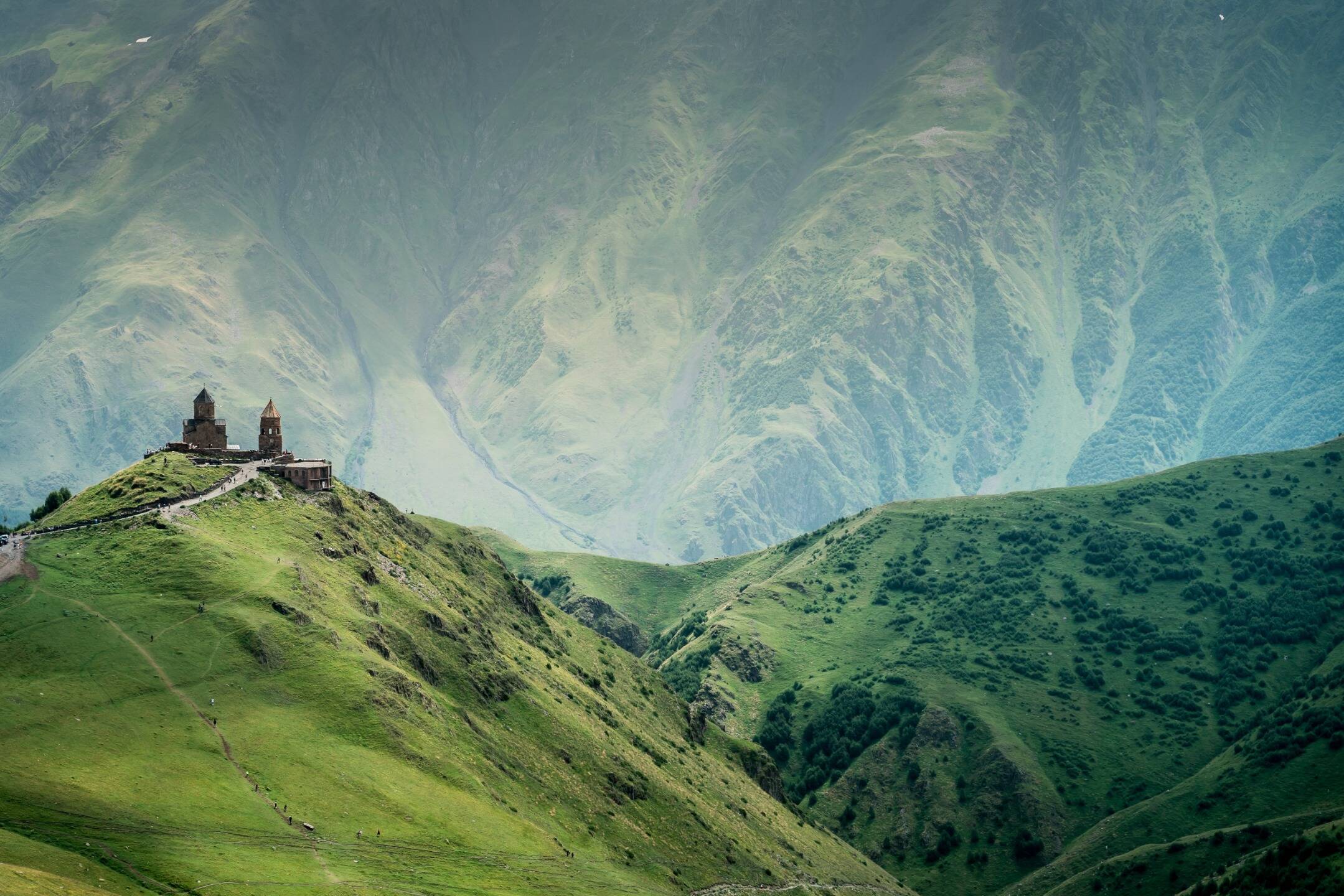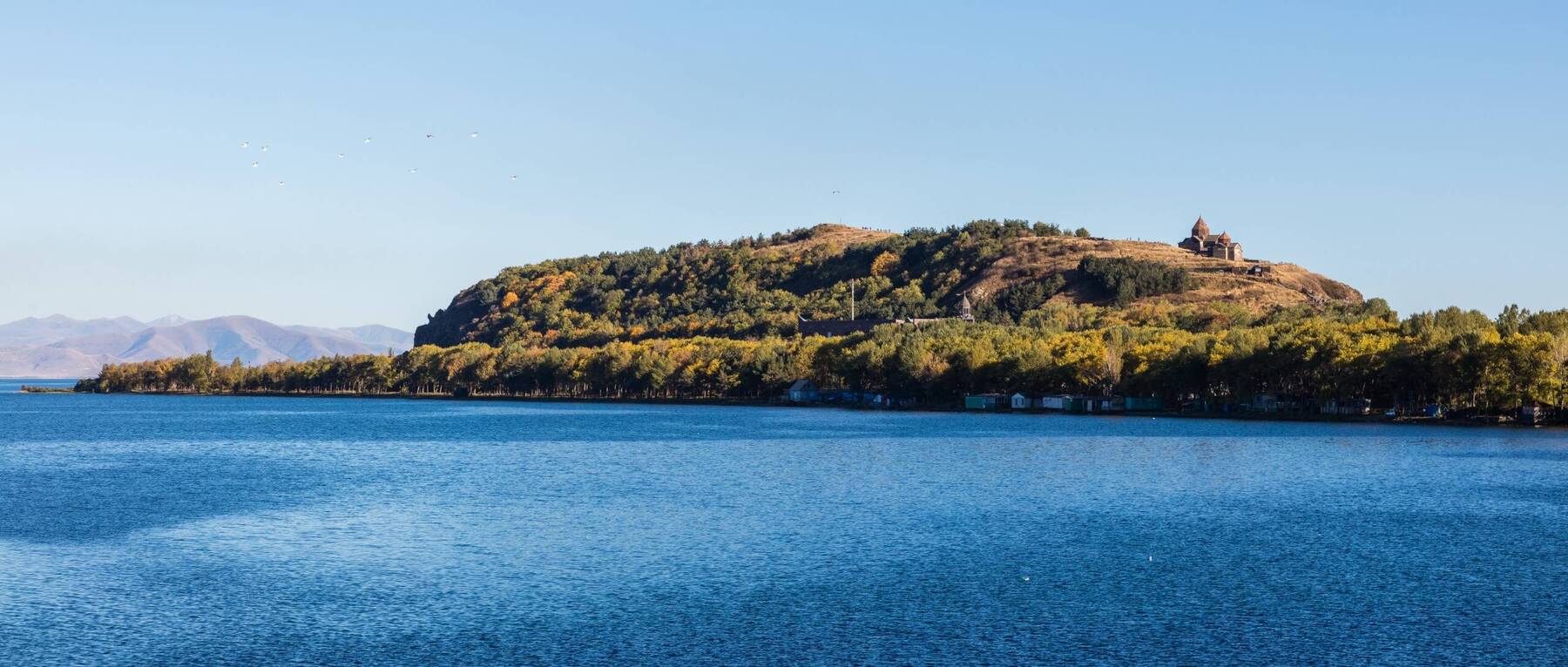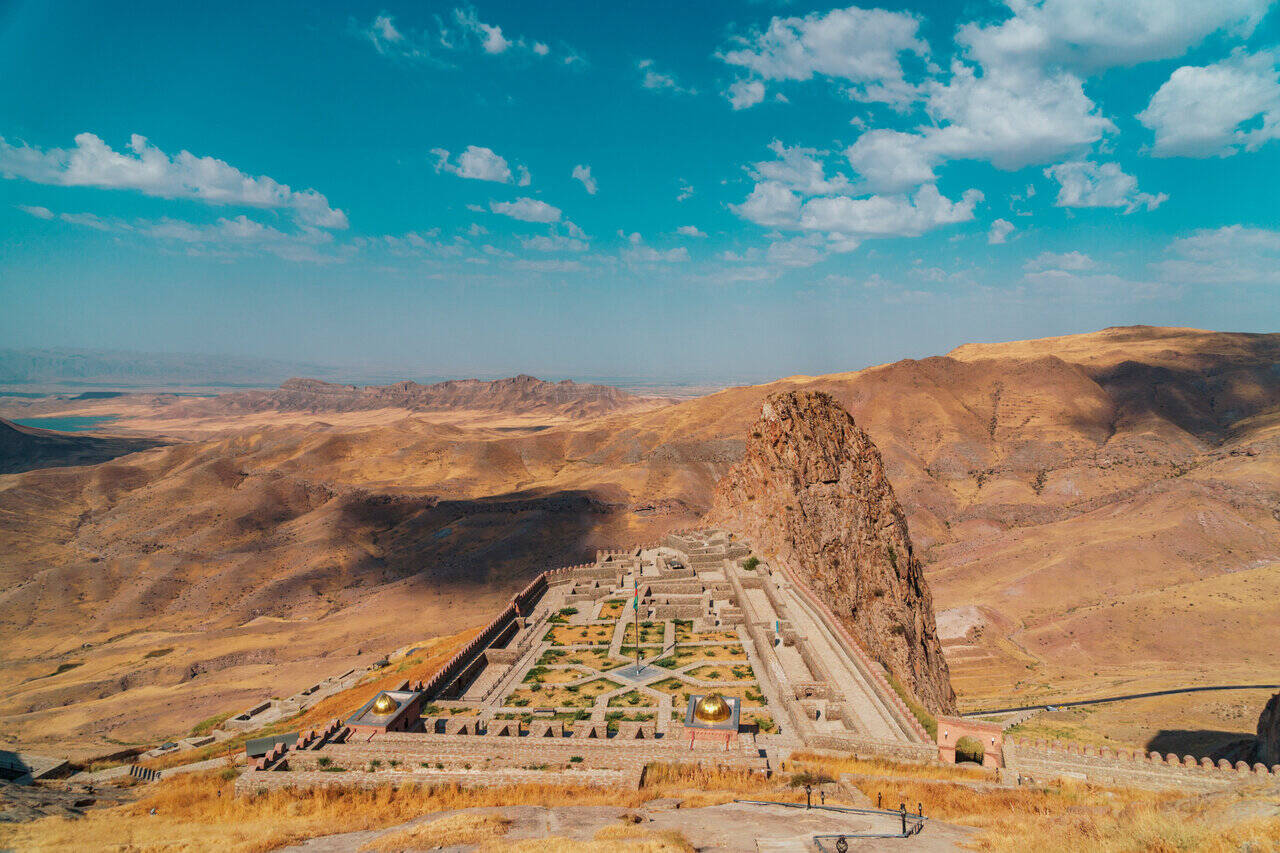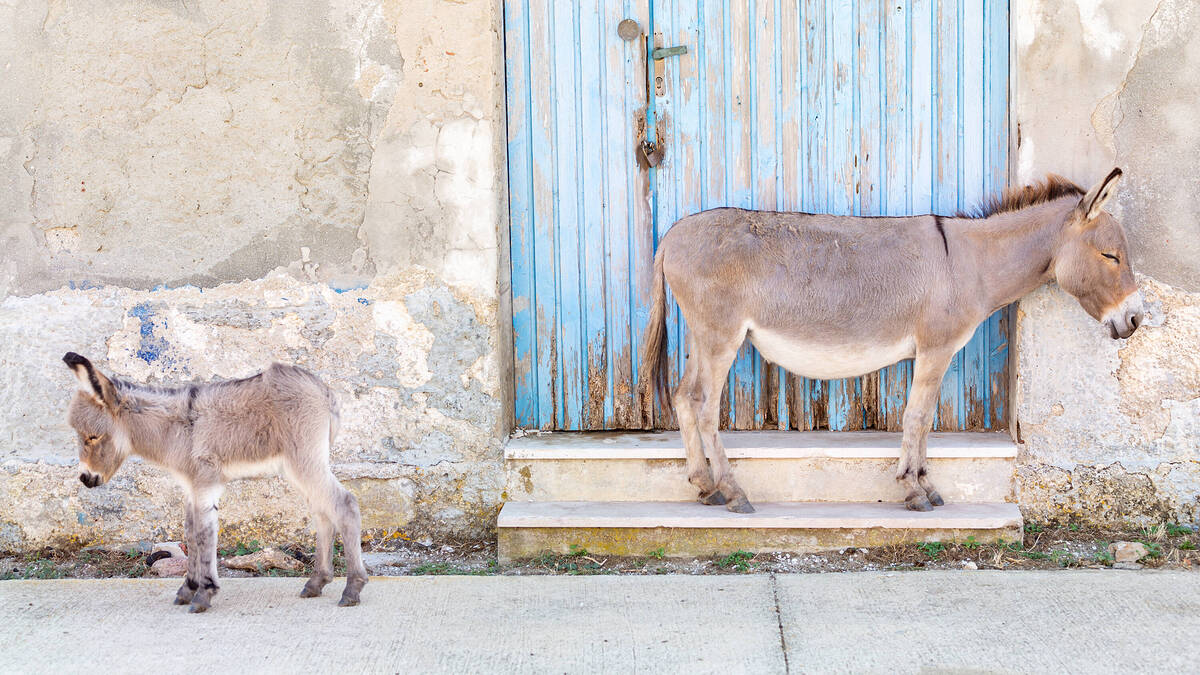Sighnagi, Georgia
Nestled in Georgia’s stunning Kakheti wine region just two hours from Tbilisi, this colourful hilltop town with its medieval walls wrapped along the town’s limits, church towers poking up from steep cobbled streets and red-roofed villas — many with colourful galleries and balconies attached to their façades, evokes a sense of place not far from that of Pienza, Montepulciano or another of Tuscany’s more scenic hilltop villages. It’s the kind of village where time passes slowly, where strolls are long and languid, where locals sit side by side on old wooden benches…. and rather more curiously, where almost anyone can get married twenty-four hours a day… which is where the village attained its romantic epithet “the city of love”. It is a perfect destination for a flâneur in search of a quiet place to walk and something pretty to observe.
With that in mind, the best way to experience Sighnagi is to walk its cobbled streets, peeking over wooden balconies, looking on as happy couples marry, imbibing the atmosphere inside centuries’ old churches, and listening in as octogenarians talk and walk. Foodies should seek out Churchkhela — the candle-shaped sweets sold at street-side all over Georgia and buy a few pieces as an accompaniment to one’s admiration of the local architecture, and in the evening drink a local wine on a terrace with views of the town and countryside — The Terrace Signagi is as good as any. Immerse oneself, in other words. For the best views of the village and the surrounding countryside stroll along either the city walls and one of the old defensive towers, or the much quieter Church of St. Stephen — both of which offer seemingly unending vistas of the Caucasus Mountains and the meditative topography of the Alazani Valley.






















Comments